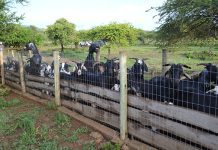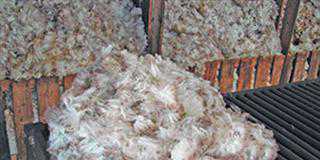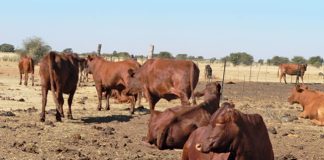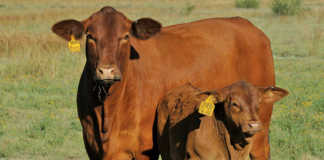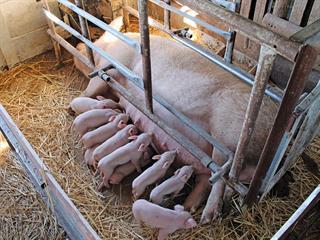
Feed costs are escalating faster than pork prices are.
A commercial pig producer, even if a small-scale farmer, must select gilts and boars to wean the maximum number of piglets that grow fast on the least amount of ration and show a high proportion of meat with low fat at slaughter. To achieve this, both estimated breeding values (EBVs) and cross-breeding values (CBVs) can be used to select a boar.
Heritability
An animal’s breeding value is based on whether its characteristics (traits) are passed on to its offspring. Heritability is a measure of what proportion of an animal’s phenotype (what it looks like, how it develops, how it behaves, and so forth) is due to its genes and what proportion is due to the environment or management system. A ‘trait’ is a single inherited feature. It is considered ‘highly heritable’ if it is above 40% and very low if it is below 10%. Both desirable and undesirable traits can be highly heritable.
Increased profitability
Desirable traits such as litter size and weaning weight are moderately heritable. However, selecting for animals with a high breeding value is not only to enhance desirable traits, but also to eliminate undesirable traits such as porcine stress syndrome.
Genetic markers have been linked to highly heritable desirable traits that increase profitability. Residual feed intake is a way to assess which pigs are more profitable for the same cost of feed. It includes daily feed intake, back-fat thickness and average daily gain.
Crossbreeding values
Research in Iowa in the US indicates that the marker gene MC4R is involved in determining daily feed intake and average daily gain (ADG), but not back-fat thickness. Two genes for odour discrimination also play a role in food intake, while genes that improve protein digestion are important for ADG. This means that it is feasible to use genetic tests to improve breeding value in pigs.
‘Heterosis’ is a term used to describe how the phenotype changes in crossbreeding. When you cross two inbred lines of livestock, you get ‘hybrid vigour’, but exactly why this is so is not well understood. It probably works because different sets of genes ‘lost’, or bred out, in inbreeding for certain phenotypic traits are ‘added’ in heterosis.
The concept of heterosis is used in commercial poultry breeding, where it is the progeny resulting from outcrosses of inbred lines superior to both their parents. Crossbreeding is also very useful in improving traits with low heritability in other species.
Experts in pig genetics can calculate the improvement of the phenotype that can be achieved by highly selective outcrossing.
Boars derived from selective outcrossing are said to have high cross-breeding values.
But such boars are specifically intended for breeding with a particular breed or genotype of sow, within a specific breeding programme.






